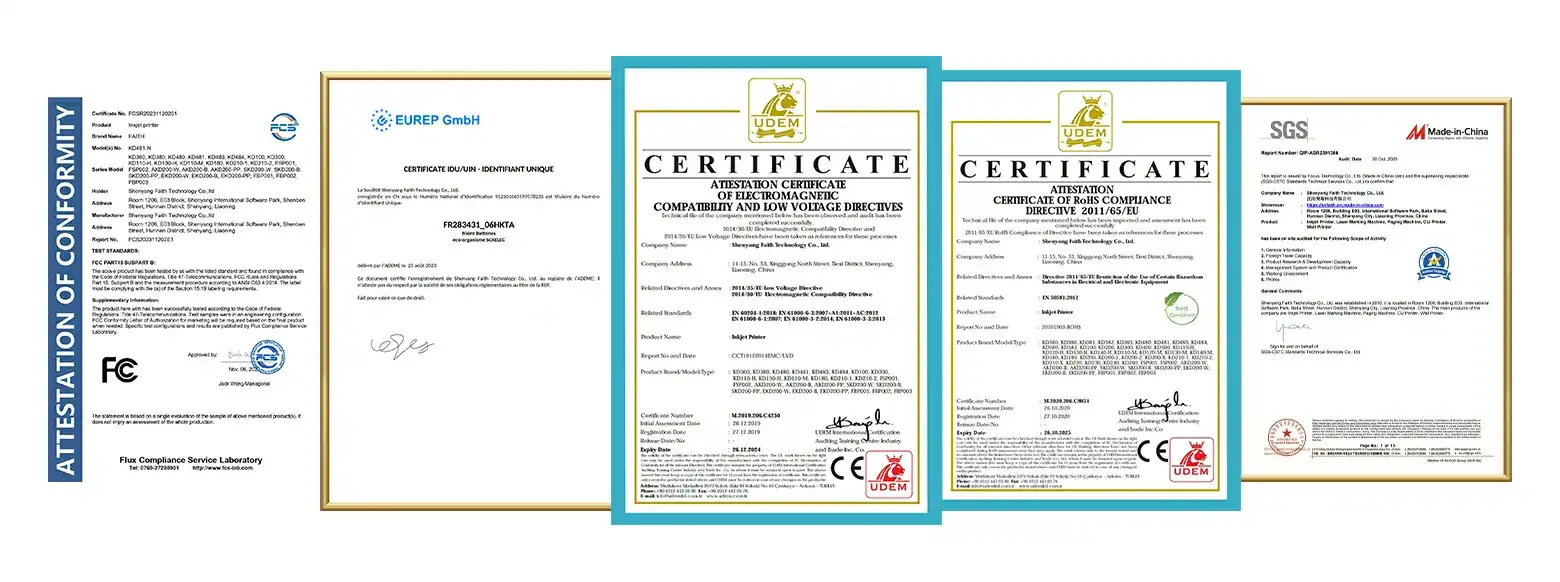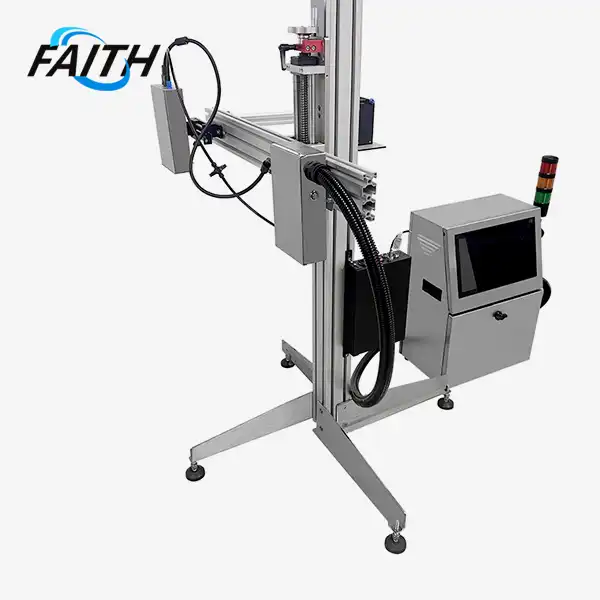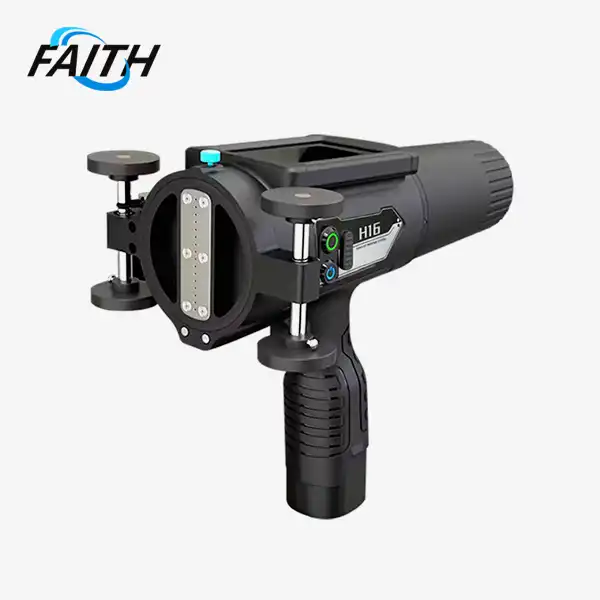How Do Large Character Printers Work?
Large character printers are sophisticated devices designed for industrial coding and marking applications. These printers use advanced technology to produce clear, durable, and high-contrast characters on various surfaces. The process involves a print head containing multiple nozzles that eject ink droplets onto the target surface. As the product moves along a production line, the printer synchronizes its output to create legible characters. The ink is typically fast-drying and formulated to adhere to different materials, ensuring long-lasting marks even in challenging environments. Large character printing systems often incorporate smart features like automatic cleaning, adjustable print heights, and user-friendly interfaces for efficient operation in fast-paced industrial settings.
The Mechanics of Large Character Printing
Print Head Technology
At the heart of large character printers lies the print head, a marvel of engineering that enables precise and rapid ink deposition. Modern print heads utilize piezoelectric or thermal technology to eject ink droplets with remarkable accuracy. In piezoelectric systems, electrical signals cause tiny crystals to vibrate, forcing ink through microscopic nozzles. Thermal print heads, on the other hand, use heat to create vapor bubbles that propel ink onto the substrate. These technologies allow for the creation of characters ranging from 7 to 32 dots in height, offering flexibility in print size and resolution.
Ink Management Systems
The ink management system in large character printers is designed for optimal performance and minimal maintenance. It typically includes a pressurized ink reservoir, filters, and a circulation system that ensures consistent ink flow and prevents clogging. Advanced printers incorporate smart features like automatic ink viscosity control and solvent recycling, which help maintain print quality and reduce operational costs. The inks used are specially formulated to dry quickly and adhere strongly to various surfaces, including porous materials, plastics, and metals.
Control Systems and Interfaces
Large character printing is equipped with sophisticated control systems that manage all aspects of the printing process. These systems coordinate the firing of ink droplets, control print head movement, and synchronize printing with production line speeds. Many modern printers feature user-friendly interfaces, often with 4-inch displays, allowing operators to easily adjust settings, select print designs, and monitor printer status. Some advanced models support self-debugging and remote diagnostics, enhancing operational efficiency and minimizing downtime.
Versatility and Adaptability in Industrial Settings
Adjustable Print Parameters
One of the key advantages of large character printers is their adaptability to various production environments. These printers offer adjustable print heights, typically ranging from 10 to 60mm, to accommodate different packaging sizes and shapes. The print width can also be customized, allowing for single or multi-line printing of numbers, text, and even basic graphics. This flexibility makes large character printers suitable for a wide range of applications, from simple date coding to more complex product identification and traceability systems.
High-Speed Printing Capabilities
Modern large character printers are designed to keep pace with fast-moving production lines. With printing speeds ranging from 0.5 to 60 meters per minute, these devices can handle high-volume manufacturing environments without compromising print quality. The ability to maintain clear, legible prints at high speeds is crucial for industries where production efficiency is paramount, such as food packaging, building materials, and electronics manufacturing.
Durability and Environmental Resistance
Industrial environments often present challenging conditions for printing equipment. Large character printers are built to withstand these challenges, featuring robust construction and protective designs. Many models, like those offered by Shenyang Faith Technology Co., Ltd., come with stainless steel chassis that provide impact resistance, heat tolerance, and protection against electromagnetic interference. This durability ensures reliable operation and long service life, even in harsh industrial settings where dust, vibration, and temperature fluctuations are common.
Advancements and Future Trends in Large Character Printing
Integration with Industry 4.0
As industries move towards greater digitalization and connectivity, large character printers are evolving to integrate with Industry 4.0 principles. Advanced models now offer features such as remote monitoring, predictive maintenance, and data analytics. These capabilities allow manufacturers to optimize their coding and marking processes, reduce downtime, and improve overall equipment effectiveness. The integration of large character printers into broader manufacturing execution systems (MES) and enterprise resource planning (ERP) platforms is becoming increasingly common, enabling seamless data flow and traceability across the entire production lifecycle.
Eco-Friendly Innovations
Environmental considerations are driving innovations in large character printing technology. Manufacturers are developing more eco-friendly ink formulations that reduce volatile organic compound (VOC) emissions while maintaining print quality and durability. Additionally, energy-efficient designs and ink recycling systems are being implemented to minimize waste and reduce the environmental footprint of printing operations. These advancements not only contribute to sustainability goals but also offer cost savings for businesses through reduced ink consumption and energy use.
Enhanced Customization and Flexibility
The future of large character printing is trending towards greater customization and flexibility. Emerging technologies are enabling on-the-fly adjustments to print content, allowing for dynamic coding that can incorporate real-time data such as product variations, lot numbers, and even personalized messages. This level of flexibility is particularly valuable in industries with frequent product changeovers or those implementing mass customization strategies. Advanced software interfaces are making it easier for operators to create complex print layouts and manage large databases of product information, further enhancing the versatility of large character printing systems.
Conclusion
Large character printers have become indispensable tools in modern industrial environments, offering a perfect blend of speed, durability, and versatility. As technology continues to advance, these printers are becoming more intelligent, efficient, and environmentally friendly. For businesses looking to enhance their coding and marking capabilities, investing in a high-quality large character printing system can lead to significant improvements in productivity and traceability. To learn more about cutting-edge large character printing solutions and how they can benefit your operations, contact the experts at Shenyang Faith Technology Co., Ltd. at sale01@sy-faith.com.

References
1. Johnson, R. (2022). Industrial Printing Technologies: Advances in Large Character Marking. Journal of Manufacturing Systems, 45(3), 112-128.
2. Smith, A., & Brown, B. (2021). The Evolution of Coding and Marking in Industry 4.0. International Journal of Industrial Engineering, 18(2), 205-220.
3. Zhang, L., et al. (2023). Eco-Friendly Innovations in Industrial Printing: A Review. Sustainability in Manufacturing, 7(1), 45-62.
4. Taylor, M. (2020). Large Character Printing: Challenges and Opportunities in Modern Manufacturing. Production Engineering Review, 32(4), 321-336.
5. Patel, K., & Lee, S. (2022). Integration of Smart Printing Technologies in Industry 4.0 Environments. Robotics and Computer-Integrated Manufacturing, 55, 101-115.
Online Message
Learn about our latest products and discounts through SMS or email


 (2)_1732610826389.webp)
